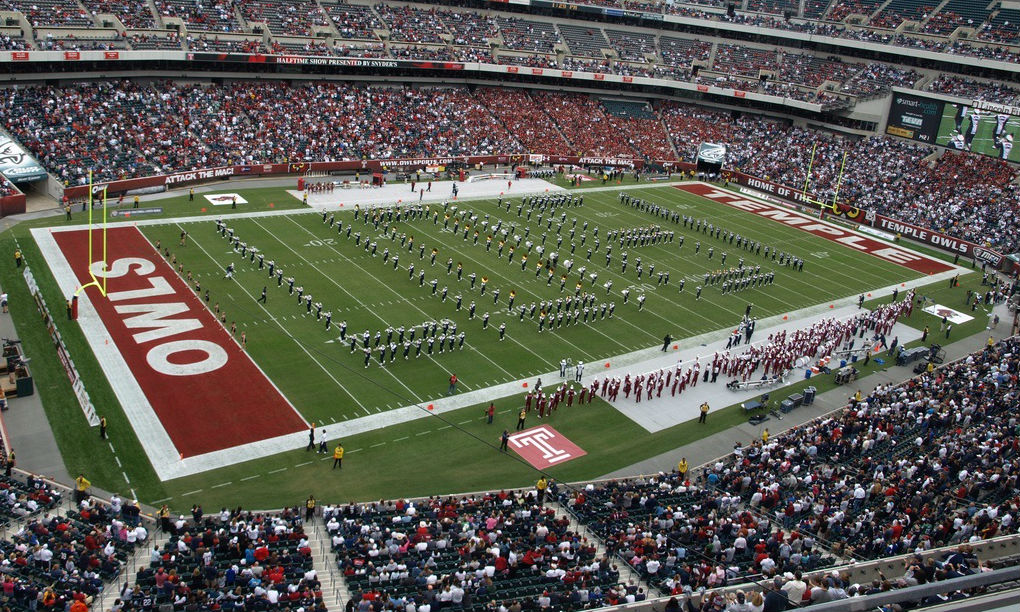The history of Temple University football is fairly uneventful and generally not very important. Three years ago, Matt Rhule turned the program into one of the best teams in the American Athletic Conference and even a nationally ranked team. A defeat of Penn State for the first of its kind in program history established a definite change and the following year, Temple had a conference championship.
Although Matt Rhule left for Baylor, despite saying he would not one week before ditching during last offseason, the hope and expectation for Temple to continue to be a solid program remains. Now with former Florida defensive Coordinator Geoff Collins at the helm, a 7-6 season and a bowl victory look promising in what was cut out to be a rebuilding year.

The original Temple Stadium, built in 1928 and closed in 1978
Outside the lines, Temple has been dealing with an entirely different issue than winning football games. Currently, home football games are played at the Super Bowl Champion Philadelphia Eagles’ home stadium Lincoln Financial Field. It is a beautiful stadium, but not at all a suitable home for the Temple Owls, who often struggle with attendance and do not often play elite competition. Financially, this is not an ideal situation for Temple University. Outside of the fee they need to pay in order to play their home schedule at the Linc, ticket sales and concessions income go to the Eagles, not Temple.
In response, the University came up with a plan to build a stadium on campus about two years ago. For those unfamiliar with Temple’s geography, this is a serious undertaking. Temple is in North Philadelphia, an extremely urban neighborhood with little to no room for anything more than the current campus due to housing in the area. In response, the neighbors and some community student groups began to protest the proposals and they stalled because of the backlash.

The newest stadium proposal, which the University hopes will be accepted by the neighborhood and the city
About a month ago, more than a year after the city denied the official proposals, Temple proposed a new stadium site and plan. According to the University, this would interfere much less with the neighborhood and reside almost entirely on campus, with the main entrance even bordering Broad Street. This proposal in no way appeased the neighborhood or Temple’s community outreach groups. A group has been created called Stadium Stompers, which meets periodically to try to educate the residents, hear their opinions, and fight the stadium proposals. These most recent proposals are still being reviewed by the city, but it seems like any situation that appeases both the University and the community is completely impossible.
The student body is also split between the stadium’s merit and its complete disregard for the community and the neighbors. For those who enjoy the feeling of Saturday game day and celebrating victory with the rest of the student body, an on campus stadium would work wonders in creating a more electric environment for the football team. But the pushback from the community and the claim that it is destructive to their neighborhood is almost too much to ignore. Both Temple University and the city of Philadelphia face a major dilemma with the stadium plans.




